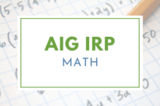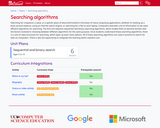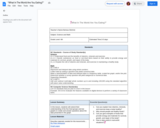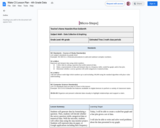
This presentation about data concepts is from Tools 4 NC Teachers. It is remixable.
- Subject:
- Mathematics
- Material Type:
- Presentation
- Reference Material
- Date Added:
- 07/09/2019

This presentation about data concepts is from Tools 4 NC Teachers. It is remixable.

This set of parent and family resources is from Tools 4 NC Teachers. This is remixable.

This resource is from Tools 4 NC Teachers. It provides norms for students about participating in Number Talks. It is remixable.

This resource is from Tools 4 NC Teachers. It provides norms for students about participating in Number Talks. It is remixable.

In this activity students draw bar graphs and compare information charted on two different bar graphs while paying attention to scaling and labeling axes.

In this activity, students generate measurement data by measuring various lengths using the appropriate tools (rulers, yard sticks). This lesson is designed for students who show mastery in measurement data (linear units) and displaying the data in a line plot using appropriate units. Additionally, the students are informally introduced to proportional reasoning when analyzing the relationship of heights of items to lengths of shadows. This lesson was developed by NCDPI as part of the Academically and/or Intellectually Gifted Instructional Resources Project. This lesson plan has been vetted at the state level for standards alignment, AIG focus, and content accuracy.

Searching for a keyword, a value, or a specific piece of data (information) is the basis of many computing applications, whether it’s looking up a bank account balance, using an internet search engine, or searching for a file on your laptop. Computers deal with a lot of information so we need efficient algorithms for searching. The first unit explores sequential and binary searching algorithms, which enable them to become familiar with the factors involved in choosing between different algorithms for the same purpose. Once students understand these searching algorithms, there is a unit on data structures for searching, which open up even more options. All of these searching algorithms are used in practice to search for data on computers. There is also the opportunity to integrate this learning within statistics unit.

In this lesson, 4th grade students will extend their understanding of the five food groups and bar graphs to create and answer questions about the data presented in the graph by creating a Makey Makey project.

Students will generate data by formulating a question. Then, students will decide whether the survey question yields categorical data or numerical data. With the microbit, students will collect data using the step monitor project. Students will represent data on paper, or Google applications including their frequency tables, scaled bar graphs, or line plots. To apply the skills, students will create and answer questions about their collected data.